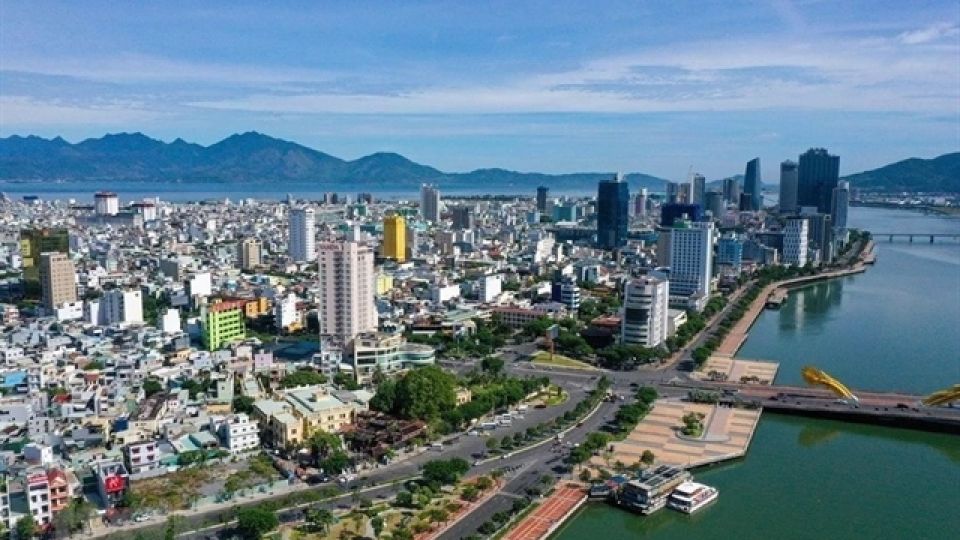August 5, 2025
HANOI – Many Vietnamese localities are now ambitiously planning to form free trade zones (FTZs), with the aim of creating breakthroughs in economic growth.
Khánh Hòa is among the latest provinces to announce plans for establishing an FTZ.
At a recent meeting with enterprises and investors, Chairman of the provincial People’s Committee Trần Quốc Nam said that the province was studying the model for the Khánh Hòa Free Trade Zone, with a desire to create a gateway for marine economic development linked with high-end international services. The proposed location was the Vân Phong Economic Zone – one of the south central province’s designated growth engines.
The central province of Hà Tĩnh also harbours an ambition to develop an FTZ in Vũng Áng. In mid-July, the provincial People’s Committee held a special meeting to discuss the plan to establish the Vũng Áng Free Trade Zone, envisioning it as an international logistics hub serving the entire Indochina region. The provincial Department of Finance has been tasked with working with relevant stakeholders to draft the proposal and submit it to the provincial Party Committee’s Standing Board by August 10.
Not only Khánh Hòa and Hà Tĩnh, but many other localities across the country are also “laying the groundwork” in hopes of being granted permission to establish FTZs.
Đồng Nai is one example. The southern province aims to develop an FTZ linked to Long Thành Airport infrastructure and surrounding facilities.
Preliminary outlines for this zone have been drafted, with plans for four functional subzones: manufacturing, logistics, finance–commerce–services, and research, innovation, information technology and digital economy. Đồng Nai estimates that the cost to build the FTZ will be around US$16 billion.
Similarly, Bà Rịa–Vũng Tàu (now part of HCM City) previously strived to develop an FTZ associated with the seaport in the Cái Mép Hạ area. This zone was planned to cover over 3,749 hectares, focusing on digital economy, green economy, and circular economy as its core and driving forces.
While many localities are preparing, in reality only two FTZs – in Đà Nẵng and Hải Phòng – have been approved by the National Assembly for pilot establishment, with many breakthrough and superior policies and mechanisms. Among them, the Đà Nẵng Free Trade Zone was officially established by the Government in mid-June, covering more than 1,880 hectares, with the goal of becoming a regional economic centre and playing the role as a strategic growth pole for the central region and the whole country in the context of new development.
In the long term, the Đà Nẵng Free Trade Zone will be developed into an important link in the global and Asia-Pacific regional supply chain network, serving as a manufacturing hub and an international cargo transit centre connected with Liên Chiểu Port, Đà Nẵng International Airport, and the East-West Economic Corridor.
A boost for growth
The Government has set a clear economic target for the coming period: achieving double-digit growth starting from 2026. For this year, the target growth rate is 8.3–8.5 per cent. In addition to traditional growth drivers such as investment, consumption and exports, new growth drivers are also emphasised. Among them, new models like international financial centres and free trade zones will be prioritised and actively promoted.
When presenting to the National Assembly the special mechanism for Hải Phòng, which includes the establishment of the Hải Phòng Free Trade Zone, Minister of Finance Nguyễn Văn Thắng affirmed that this special mechanism would lay the foundation for the northern port city to become a new growth pole in the Red River Delta region and contribute to the goal of double-digit growth in the 2026–30 period.
Regarding the Hải Phòng Free Trade Zone specifically, Thắng said that this model would help attract investment capital and become a logistics hub thanks to special mechanisms on foreign currency and land leasing.
With the FTZ model, Việt Nam could become a hub for transhipment and packaging, and connecting global supply chains, thereby increasing foreign currency earnings and transhipment activities, he said.
According to the minister, preferential and breakthrough policies for the FTZs will be implemented cautiously, with strict inspection and supervision. After the pilot period, if effective, expansion and legalisation of the model may be proposed.
On the day Đà Nẵng officially announced the establishment of its FTZ under the Prime Minister’s decision, Deputy Prime Minister Nguyễn Hòa Bình emphasised that if successfully developed, this zone would be a “catalyst” for connecting the global economy, promoting development not only for the city today but also for its future, the region, and the country as a whole.


